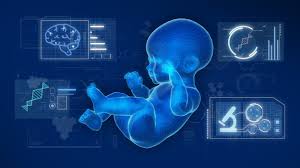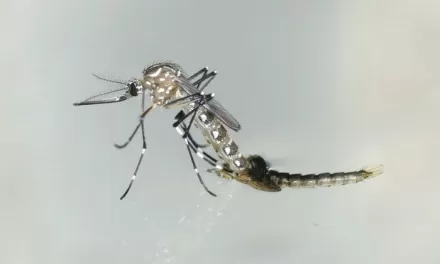In a groundbreaking study, researchers from Florida Atlantic University (FAU) have employed artificial intelligence (AI) to better understand how infants transition from random, exploratory movements to purposeful actions. This study, published in Scientific Reports, highlights how machine learning techniques can analyze infant behaviors and unveil new insights into early development.
Traditionally, research has focused on spontaneous infant movements, classifying behaviors into categories like fidgety and non-fidgety. However, the underlying mechanics of how infants purposefully engage with their surroundings remain elusive. To bridge this gap, FAU researchers used a classic developmental experiment, the baby-mobile experiment, which has been a staple in infant learning studies since the 1960s. In this experiment, a mobile is tethered to an infant’s foot, allowing the baby to control its movement through kicks, helping scientists observe how infants discover their ability to influence their environment.
AI Sheds Light on Movement Patterns
The team explored whether AI could detect complex movement patterns that reveal when and how infants begin to act purposefully. Using a Vicon 3D motion capture system, infant movements were tracked and categorized. Machine and deep learning techniques were applied to the data, including a specialized deep learning model, 2D-CapsNet, which performed exceptionally well in identifying patterns within five-second clips of infant movements.
The study found that foot movements were the most accurate in reflecting an infant’s engagement with the environment, surpassing the movement accuracy of other body parts like hands and knees. The 2D-CapsNet model achieved an impressive 86% accuracy when analyzing foot movements, suggesting that the feet, as the primary point of contact in this experiment, played a crucial role in how infants learned to control the mobile.
“This finding is significant because the AI systems were not informed about the experiment or which part of the infant’s body was connected to the mobile,” said Scott Kelso, Ph.D., co-author and Glenwood and Martha Creech Eminent Scholar in Science at FAU’s Center for Complex Systems and Brain Sciences. “It shows that infants’ feet are their primary means of interacting with the world at this stage, acting as their ‘end effectors.'”
Discovering Purposeful Action
Interestingly, researchers observed that after being disconnected from the mobile, infants showed more exploratory behavior than before the experiment. This suggests that infants, after learning to control the mobile, actively sought ways to reconnect with their environment, demonstrating an early understanding of cause and effect. Some infants even displayed movement patterns reminiscent of their earlier interactions, indicating that they had grasped the relationship between their actions and the mobile’s movement.
“These movements hint that certain infants retained their understanding of how the mobile worked, even when they were no longer connected to it,” explained Aliza Sloan, Ph.D., co-author and postdoctoral research scientist at FAU.
AI as a Window into Infant Cognition
One of the major challenges in studying infant behavior is the lack of verbal communication. Unlike adults, infants cannot explain their actions, making it difficult to interpret their behaviors. This is where AI steps in.
“AI helps us analyze subtle changes in infant movements, even their stillness, to give us insights into how they think and learn, even before they can speak,” said Nancy Aaron Jones, Ph.D., co-author and director of FAU’s WAVES Lab. This technology provides a new avenue for studying the unique ways infants engage with their surroundings, allowing for deeper understanding and potentially better identification of developmental disorders.
Implications for the Future
This research opens doors to new ways of assessing infant behavior using AI. By combining AI with theory-based experiments, researchers hope to develop better tools for identifying developmental risks and improving early diagnoses. These advancements could lead to more targeted treatments for infants with developmental disorders, ultimately enhancing early intervention strategies.
The study was supported by several prestigious institutions, including the U.K. Engineering and Physical Sciences Research Council, the FAU Foundation, and the United States National Institutes of Health.
This research marks an exciting step forward in the use of AI to understand human development, particularly in the critical early stages of life where nonverbal cues are key to understanding how infants connect with the world.











